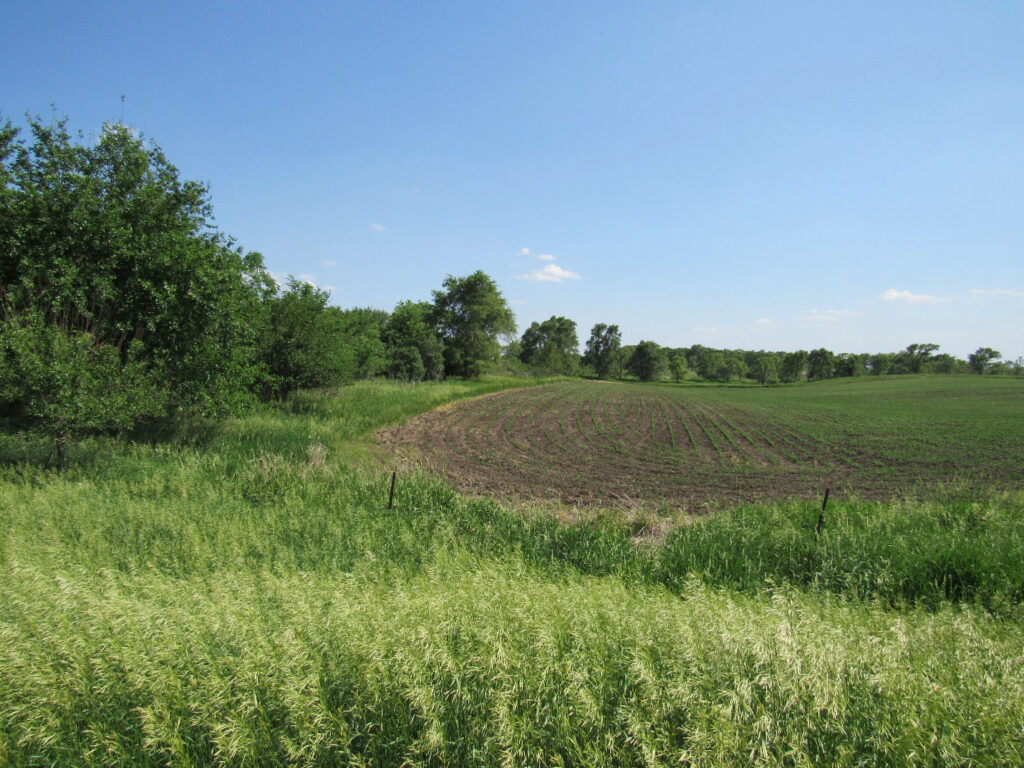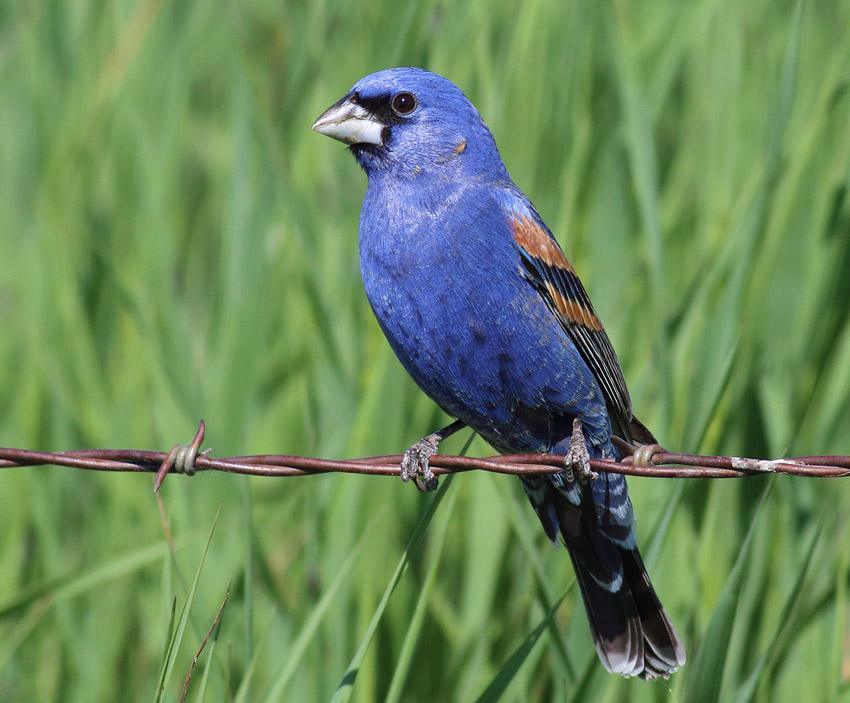On my morning running route through farmland with shrubby field borders in southeastern South Dakota, I noticed that Blue Grosbeaks often first showed up in the area on approximately July 1st. This arrival pattern seemed odd and different from arrival patterns of typical migrants in this habitat, such as Dickcissel, Indigo Bunting, Field Sparrow and Orchard Oriole.

To address the question of whether the mid-summer arrival pattern of Blue Grosbeaks that I noticed in my area of southeastern South Dakota was a broader trend across the northern portion of the breeding range in the central U.S., we used three different citizen-science approaches. First, we accessed observation records for Blue Grosbeak and for six “typical” migrant species from a bird observation database for South Dakota maintained by the South Dakota Ornithologists’ Union (SDOU). We compared cumulative frequency distributions for Blue Grosbeak observations in South Dakota with similar cumulative distributions for closely related species and species occupying similar habitats. These “benchmark” species included Dickcissel, Indigo Bunting, Rose-breasted Grosbeak, Field Sparrow, Bobolink and Orchard Oriole. These comparisons revealed that Blue Grosbeaks arrived at South Dakota breeding areas later than the benchmark species.
Next, we organized a citizen-science roadside survey patterned after the Breeding Bird Survey to count Blue Grosbeaks in central and eastern South Dakota throughout the summers of 2019 and 2020. These surveys revealed that the majority of the Blue Grosbeak breeding population arrived in South Dakota after June 15 in both years, especially so in 2019.
Finally, we analyzed eBird data for the states in the central portion of the U.S. range comparing frequency of occurrence data for Blue Grosbeaks in the different states and for Blue Grosbeaks and the benchmark species in South Dakota. We also used Kernel Density Estimation with spatially explicit eBird data to calculate kernel density estimates for each state in the central portion of the breeding range. These comparisons agreed with the SDOU data that Blue Grosbeak arrival dates in South Dakota were later than for the benchmark species. Thus, mid-summer arrival appears to be a common occurrence for Blue Grosbeaks in the northern portion of the breeding range in the central U.S.
This led us to question where these mid-summer arriving birds in the northern portion of the breeding range were originating. We considered three possibilities: 1) locally breeding birds initiating a second nesting attempt in new territories; 2) wandering birds that failed to acquire a territory earlier in the breeding season and wandered to South Dakota in mid-summer; and 3) birds that bred in the southern portion of the breeding range and moved northward to initiate a second nesting attempt. This latter strategy is termed dual breeding and is rare strategy among birds, described for only a few species, with generally incomplete documentation usually based on changing geographic distribution patterns over the breeding season. The typical pattern of dual breeding described for North American bird species, such as Sedge and Marsh wrens, is a north first, then south, dual breeding strategy.
Analysis of the timing and duration of nesting and territorial singing activities in the northern and southern portions of the breeding range is consistent with a south-then-north dual breeding strategy for Blue Grosbeaks. Furthermore, the comparisons using eBird data showed that Blue Grosbeak frequency of occurrence on eBird checklists increased from mid-June through early August in South Dakota but decreased over this same time period in the southern portion of the breeding range in Texas and Oklahoma, also consistent with a south-then-north dual breeding strategy. Such a strategy might allow birds to move north to cooler climates for a second nesting attempt, which could be beneficial since hot temperatures have generally negative impacts on nesting success in birds. Confirmation of a south-then-north dual breeding strategy will require future tracking studies and/or anatomical/physiological confirmation of previous breeding, as the current study does not rule out non-dual breeding origins for the mid-summer arriving birds in South Dakota. If confirmed, however, this would represent the first south-then-north dual breeding strategy for a New World bird.
The results of this study were recently published in the Journal of Field Ornithology:
Swanson, D.L. and R. Goljani Amirkhiz. 2021. Mid-summer arrival by Blue Grosbeaks at the northern extent of their breeding range: evidence for dual breeding? Journal of Field Ornitholology. https://doi.org/10.1111/jofo.12367.
Guest post by:
David Swanson
Department of Biology
University of South Dakota
Header photo by Photo Doug Backlund.

